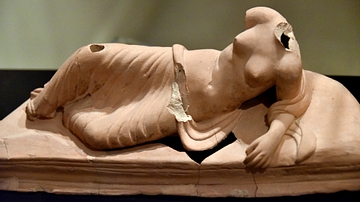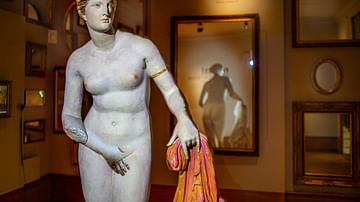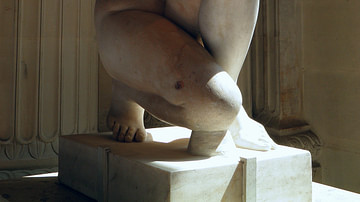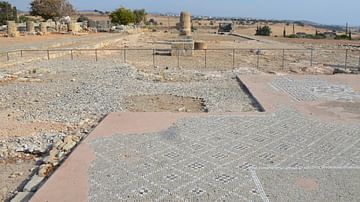Illustration
Here the goddess Aphrodite/Venus is surprised as she bathes, her water jar resting under her left thigh. She crouches naked and attempts to cover herself with her arms and expressive hands. Her beautiful head, with its top-knot hair style, is turned nervously to one side, perhaps in the direction of an intruder. This sculpture was probably made in the 1st or 2nd century CE and is a Roman copy of an earlier Greek original. The original sculpture, now lost, may have been of bronze or marble, perhaps dating to the 2nd century BCE. This statue is sometimes known as Lely's Venus, named after the painter Sir Peter Lily. (The British Museum, London)
About the Author
Cite This Work
APA Style
Amin, O. S. M. (2016, April 11). Lely's Venus. World History Encyclopedia. Retrieved from https://www.worldhistory.org/image/4887/lelys-venus/
Chicago Style
Amin, Osama Shukir Muhammed. "Lely's Venus." World History Encyclopedia. Last modified April 11, 2016. https://www.worldhistory.org/image/4887/lelys-venus/.
MLA Style
Amin, Osama Shukir Muhammed. "Lely's Venus." World History Encyclopedia. World History Encyclopedia, 11 Apr 2016, https://www.worldhistory.org/image/4887/lelys-venus/. Web. 16 Apr 2025.








